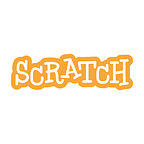Scratch Lab: Extending Creative Possibilities and Play
Scratch has long been interested in pushing the boundaries of what you can create with code. We’re constantly experimenting and trying new things. Before we decide if new blocks are right for the Scratch coding editor, it’s crucial to see the creative, innovative, and surprising ways Scratchers interact with them. We wanted to create a playspace or sandbox where everyone could try out these new features. Today, we’re thrilled to announce Scratch Lab: a space where the Scratch Team will share experimental blocks that extend the creative possibilities of Scratch.
Meet the Blocks
Scratch Lab kicks off with two new experiences: Animated Text blocks that let you animate and dynamically change the colors and fonts of text in your project, and Face Sensing blocks that let you snap graphic characters and objects to a video image of your face.
Animated Text Blocks
We have always been impressed by the many ways Scratchers bring words to life. With experimental Animated Text blocks, we hope to open up even more possibilities for Scratch storytellers and educators supporting literacy with Scratch. Whether you’d like to animate a poem, narrate a game with creatively designed titles, create interactive vocabulary lessons, or retell a favorite storybook, this extension can open new, simpler, and more creative ways to play with text in your projects.
Face Sensing Blocks
Inspired by the creative and playful ways Scratchers use our video sensing extension to bring users into their projects, we developed experimental Face Sensing blocks to simplify and expand these explorations. The applications of these blocks are limited only by your imagination — you can create face filters to give yourself a funny costume or pair of cat ears; a pong game that’s controlled by your nose; or a simple Augmentative and Alternative Communication (AAC) device for those with limited mobility and/or non-verbal communication needs.
The Face Sensing blocks are based on machine-learning technology to enable the computer to detect different parts of a face. This type of technology is susceptible to “algorithmic bias,” meaning that it might detect faces of some people more accurately than others. In developing the Face Sensing blocks, our Scratch Lab team put a lot of effort into identifying a model that would minimize this bias, and we’re excited to test its efficacy and continue to research equitable machine learning technologies. You can learn much more about this design process in our Face Sensing blog post.
An Invitation to Play
Scratch Lab is a space for our team to tinker, test, and play with new ideas. But most importantly, Scratch Lab is a space for you to tinker, test, and play with new ideas! Your feedback and ideas provide invaluable insights that help us iterate on the design process and develop innovative ways for kids to express themselves creatively.
Our team will continue to research and develop new Scratch Lab experiences, and we will be sure to keep you updated on our progress. In the meantime, we invite all learners, educators, families, and Scratchers to engage in these first Scratch Lab experiences. Please go forth and play, and let us know what you have to say!
